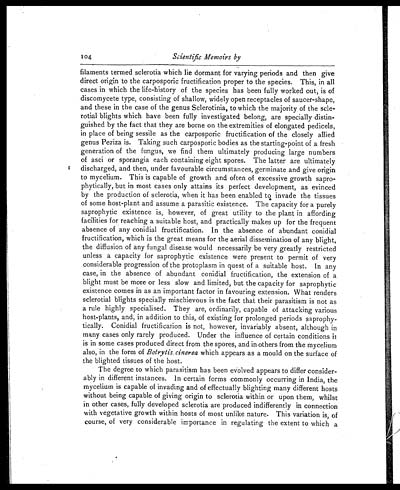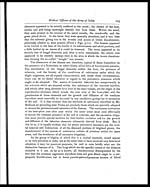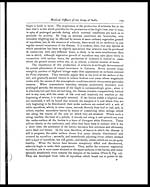Medicine - Institutions > Army health reports and medical documents > Scientific memoirs by medical officers of the Army of India > Part X, 1897 > 5 - On certain diseases of fungal and algal origin affecting economic plants in India
(125) Page 104
Download files
Individual page:
Thumbnail gallery: Grid view | List view

104
Scientific Memoirs by
filaments termed sclerotia which lie dormant for varying periods and then give
direct origin to the carposporic fructification proper to the species. This, in all
cases in which the life-history of the species has been fully worked out, is of
discomycete type, consisting of shallow, widely open receptacles of saucer-shape,
and these in the case of the genus Sclerotinia, to which the majority of the scle-
rotial blights which have been fully investigated belong, are specially distin-
guished by the fact that they are borne on the extremities of elongated pedicels,
in place of being sessile as the carposporic fructification of the closely allied
genus Peziza is. Taking such carposporic bodies as the starting-point of a fresh
generation of the fungus, we find them ultimately producing large numbers
of asci or sporangia each containing eight spores. The latter are ultimately
discharged, and then, under favourable circumstances, germinate and give origin
to mycelium. This is capable of growth and often of excessive growth sapro-
phytically, but in most cases only attains its perfect development, as evinced
by the production of sclerotia, when it has been enabled to invade the tissues
of some host-plant and assume a parasitic existence. The capacity for a purely
saprophytic existence is, however, of great utility to the plant in affording
facilities for reaching a suitable host, and practically makes up for the frequent
absence of any conidial fructification. In the absence of abundant conidial
fructification, which is the great means for the aerial dissemination of any blight,
the diffusion of any fungal disease would necessarily be very greatly restricted
unless a capacity for saprophytic existence were present to permit of very
considerable progression of the protoplasm in quest of a suitable host. In any
case, in the absence of abundant conidial fructification, the extension of a
blight must be more or less slow and limited, but the capacity for saprophytic
existence comes in as an important factor in favouring extension. What renders
sclerotial blights specially mischievous is the fact that their parasitism is not as
a rule highly specialised. They are, ordinarily, capable of attacking various
host-plants, and, in addition to this, of existing for prolonged periods saprophy-
tically. Conidial fructification is not, however, invariably absent, although in
many cases only rarely produced. Under the influence of certain conditions it
is in some cases produced direct from the spores, and in others from the mycelium
also, in the form of Botrytis cinerea which appears as a mould on the surface of
the blighted tissues of the host.
The degree to which parasitism has been evolved appears to differ consider-
ably in different instances. In certain forms commonly occurring in India, the
mycelium is capable of invading and of effectually blighting many different hosts
without being capable of giving origin to sclerotia within or upon them, whilst
in other cases, fully developed sclerotia are produced indifferently in connection
with vegetative growth within hosts of most unlike nature. This variation is, of
course, of very considerable importance in regulating the extent to which a
Set display mode to: Large image | Zoom image | Transcription
Images and transcriptions on this page, including medium image downloads, may be used under the Creative Commons Attribution 4.0 International Licence unless otherwise stated. ![]()
| Permanent URL | https://digital.nls.uk/75003426 |
|---|
| Shelfmark | IP/QB.10 |
|---|---|
| Additional NLS resources: | |




